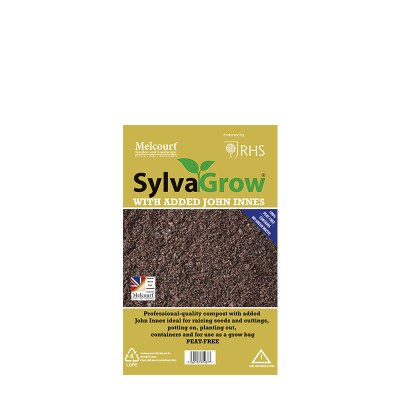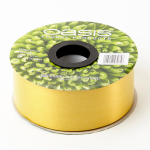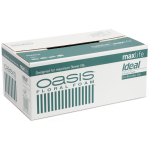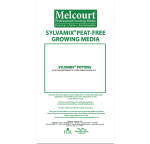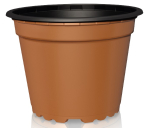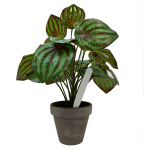- Home
-
Horticultural Products
- Home
- Horticultural Products
- Growing Media
- Pots & Trays
-
Tools & Equipment
- Home
- Horticultural Products
- Tools & Equipment
- View All Tools & Equipment
- Battery Operated Tools
- Garden Tools
- Cutting Tools
- Other Tools
- Brooms & Brushes
- Measuring & Testing Equipment
- Chemical Storage
- Heaters & Propagators
- Transportation
- Contractor Tools
- Fencing Tools
- Staples & Staples
- Garden Tidy
- Sprayers & Spreaders
- Safety Products
- Fertilisers
- Crop Protection Products
- Planters & Baskets
- Plant Support & Protection
- Greenhouses & Greenhouse Accessories
- Labels & Accessories
- Fabrics & Polythenes
- Pest Control
- Seeds & Bulbs
- Packaging
- Retail & Garden Sundries
- Wild Bird Care
- Clothing & Footwear
- Seasonal Products
- Garden Furniture
- Clearance
- Floral Art
- Amenity
- Irrigation
-
Brands
- Home
- Brands
- 6X
- Adama Agricultural Solutions UK
- Aeroplas
- Agralan
- Agropharm
- Amblers
- Armorgard
- Arrow
- Arysta LifeScience
- Baby Bio
- Bahco
- Barrier Biotech Limited
- BASF
- Bathgate Horticulture
- Bayer CropScience Limited
- B Dri
- Belchim
- BHGS
- BioGreen
- Bosmere
- Boughton
- BPI
- Brannan
- Brintons
- Bullbarrow
- Bulrush
- Calibre
- Capatex
- Castle Clothing
- Castlefield
- Certis
- CK Tools
- Chempak
- Clear
- Click
- Compo Expert GmbH
- Cooper Pegler
- CTI Plastics
- DCM
- De Sangosse
-
Desch Plantpak
- Home
- Brands
- Desch Plantpak
- View All Desch Plantpak
- Sandra Decorative Pot
- Sabina Decorative Pot
- Miranda Plant Bowl
- Desch County Hanging Basket
- Desch 'Y' Based Container Pots
- Desch Injection Moulded Container Pots
- Desch Injection Moulded Deep Containers
- Desch Thermoformed 8� Flower Pots
- Desch Thermoformed 5� Flower Pots
- Desch Thermoformed 5� Nursery Pots
- Desch Square Pots
- Desch Injection Moulded Square|Round Containers
- AMC Bedding Plant System
- Desch NexTraY Marketing Trays
- Normpack 400 Series Marketing Trays
- Desch Square Pot Carry Trays
- Desch Square Round Pot Carry Trays
- Desch Shuttle Trays - Unfilled
- Desch Shuttle Trays with Pots
- Desch Supertrays
- Desch Marketing Trays for 6cm Pots
- Normset 5000 Bedding Plant System
- Desch Plug Trays for Danish Trolleys
- Desch Cultivation Trays for Danish Trolleys
- Desch Propgation Trays for Euro Trolleys
- Doff
- Dow AgroSciences
- Dunlop
- Earthway
- Empathy
- Erin
- Evergreen
-
Fargro
- Home
- Brands
- Fargro
- View All Fargro
- Mosskade
- Peg Baskets
- Rattan Round Basket
- Rattan Cone Basket
- Rattan Wall Basket
- Growers Wire Hanging Basket
- Medium Weight Wire Hanging Basket
- Flat Bottomed Wire Hanging Basket
- Round Bottomed Wire Hanging Basket
- Heavy Duty Wire Hanging Basket
- Wire Wall Basket
- Wall Bracket for Hanging Baskets
- Kukui Basket
- Mawsynram Cone Basket
- Tutendo Basket
- Emie Shan Basket
- Cherrapunji Wall Basket
- Akita Basket
- Archer Hanging Basket
- Archer Wall Basket
- Archer Wall Trough
- Archer Wall Fountain
- Archer Fountain
- Jute Basket Liners
- Wool Basket Liners
- Coco Pre-Formed Liners
- Vipots
- Fargro Crop Protection
- Felco
- Fertil
- Fiskars
- FMC Agro
- Gardman
- Gawler Tapes
- Garland Products
- Gedney Bulbs
- GoGreen
- Greenbest
- Growing Success
- Gromax
- Hadopots
- Haemmerlin
- Hanna Instruments
- Haws
- Hortifeeds
- Hotbox International
- Hozelock
- H Smith Plastics
- Hutton
- ICL
- Industrial Plasterers
- Interfarm
- JBA Seed Potatoes
- Jeyes
- Jiffy
- Johnsons
- Klasmann
- Lamela
- Leaco
- Levington
- Limagrain UK
- Lincoln Garden Support
- LKAB Minerals
- Lows of Dundee
- Mardenkro
- Max
- Maxicrop (UK)
- Melcourt
- Mesto
- Miracle Gro
- Monsoon Marketing
- Montsanto
- NNZ Ltd
- Nufarm
- Omex
- Osmocote
-
Pasquini & Bini
- Home
- Brands
- Pasquini & Bini
- View All Pasquini & Bini
- Cigno Planter
- Cigno Flexible Planter
- Perseo Planter
- Fenice Pot - Black
- Fenice Pot - Terracotta
- Economy Saucers
- Mastelli Container Pot with Handles
- Mastelli Container Pot without Handles
- Mastelli Squat Aquatic Pot
- Vivaio Container Pots
- Bassa Container Pots
- Ercole Growing Pot
- PdotWolf
- Pest-Stop
- Phostrogen
-
Poppelmann Teku
- Home
- Brands
- Poppelmann Teku
- View All Poppelmann Teku
- Teku� TCA Hanging Basket with Hanger
- Teku� MXC 6� Round Pot
- Teku� MCI 5� Container Pot
- Teku� VTG 8� Round Pot
- Teku� VCG 5� Round Pot
- Teku� VCH 5� Tall Container Pot
- Teku� VQF Square Pots
- Teku� V..PP Square Pots
- Teku� MQD|MQC Square Pots
- Teku MQE Square-Round Pot
- Teku� T Bowl
- Teku� MAK|MAL Hanging Basket with Hanger - Standard Colours
- Teku� MAK|MAL Hanging Basket with Hanger - Trend Colours
- Teku� PT Marketing Tray
- Teku� ST|D-ST Transport Tray
- Teku� DT|TT Pot Tray
- Teku� JP Plug Tray
- Portek
- Provanto
-
Rainbow Professional
- Home
- Brands
- Rainbow Professional
- View All Rainbow Professional
- Defender Pro Tree Shelter
- Spiral Tree Guards
- Biodegradable Spiral Tree Guards
- Chainlock Tree Ties
- Black Tree Strapping
- Buckle Tree Ties
- Easy Fix Tree Ties
- Rubber Tree Cushion
- Metal Ground Cover Staples
- Rite-Edge Aluminium Edging
- Rite-L-Edge Aluminium Landscape Edging
- Woven Weed Mats
- Red Barn Wild Bird Products
- Reliance Manufacturing
- Resolva
- Richard Carter
- Richard Wenzel
- Rollins Bulldog Tools
- RoundUp
- Sapphire
- Scotts
- Silky
- Sinclair
-
Smithers Oasis
- Home
- Brands
- Smithers Oasis
- View All Smithers Oasis
- OASIS� Ideal Floral Foam Sphere
- OASIS� Ideal Floral Foam Cones
- OASIS� Ideal Table Deco
- OASIS� Ideal Florette
- OASIS� Naylor Base� Ideal Letters
- Letter Bar Sets
- OASIS� Naylor Base� Masterboard
- OASIS� Naylor Base� Ring
- OASIS� Naylor Base� Solid Heart
- OASIS� Naylor Base� Posy Pad
- OASIS� Naylor Base� Cushion
- OASIS� Ideal Letters (Foam Frames)
- Styropor Solid Sphere
- Styropor Hollow Sphere
- Styropor Half Ring
- OASIS� SEC Dry Foam Spheres
- OASIS� SEC Dry Foam Cones
- Stemtex
- Clear Cellophane|Film 30 micron
- Solufeed
-
Soparco
- Home
- Brands
- Soparco
- View All Soparco
- Roma Decorative Container Pots
- Heavy Saucers
- Erica Saucers
- Octo Pot & Hanger - Standard Colours
- Octo Pot & Hanger -Colorama Colours
- Soparco Thermoformed Duo� 5� Low - Bio Fibre Range
- Soparco SD Large Containers
- Soparco SH Round High Container Pots
- Soparco SMH Round Containers
- Soparco SX Container Pots
- Soparco Thermoformed Duo® Range
- Soparco CS Square Container Pots
- Soparco SH Square High Container Pots
- Soparco Square|Round Container Pots Standard Colours
- Soparco Square|Round Container Pots 0.5L - Colorama
- Soparco Square|Round Container Pots 1L - Colorama
- Soparco Square|Round Container Pots 2L - Colorama
- Soparco Square|Round High Container Pots
- Spear & Jackson
- SwellGel
- Syngenta
- Taylors Eye Witness
-
Tildenet
- Home
- Brands
- Tildenet
- View All Tildenet
- Gladiator Anti-Bird Netting
- Gladiator Support Netting
- Tildenet PN2 Netting
- Tildenet Deer Fence
- Butterfly Netting
- Tree Guards
- Tildenet Permatex Premium
- Extruded Windbreak - Standard 60%
- Extruded Windbreak - Heavy Duty 50%
- Monofilament 50 Windbreak
- Loktex 85% Windbreak
- Loktex 55% Windbreak
- Tildagrid Economy
- Powergrid
- Rootrainers™
-
The Good Life
- Home
- Brands
- The Good Life
- View All The Good Life
- Bamboo Loop Support
- Plant Labels
- Labels with Pencil
- Lawn Crimped Edge
- Ornamental Fence
- All Purpose Garden Mesh
- Climbing Plant Support Net
- Pea & Bean Netting|Support
- Plant Trellis
- Plant Protection Net
- Pond Protection
- Plant Support Ring
- Galvanised Wire
- Plant Support Stakes
- Soft Ties
- Brushwood Screen
- Reed Screen
- Willow Screen
- Split Bamboo Screen
- Wire Mesh Panel
- PVC Coated Wire Net
- Heavy Duty Wire
- Log Roll
- Toprose
- Treeplanta
- Tricoflex
-
Tyne Moulds
- Home
- Brands
- Tyne Moulds
- View All Tyne Moulds
- Vertical Planter System
- Angled Head Display Labels
- Angled Head Display Labels - Blackboard
- Flat Head 'T' Display Labels
- Pot Labels 4"
- Pot Labels 5"
- Pot Labels 6"
- Pot Labels 8"
- Heavy Duty Stake Labels
- Loop Lock Labels
- Info Sticks
- Bench Stand - Non Adjustable
- Adjustable Card Holder
- Gro-Triangle Support
- Plant Tapener Tape
- Adjustable Plant Ties - Single
- Adjustable Plant Ties - Double
- Super Soft Adjustable Shrub Tie
- Securing Clips
- Pot Support Clip
- Crossbar Tree Ties
- Tree Support Tie
- Super Soft Tree Ties
- Mypex Groundcover Pegs
- UPL
-
Vitax
- Home
- Brands
- Vitax
- View All Vitax
- Vitax Q4 Fertiliser - Prilled
- Vitax Vitafeed 1-0-1
- Vitax Vitafeed 1-0-2
- Vitax Vitafeed 1-1-1
- Vitax Vitafeed 1-4-1
- Vitax Vitafeed 2-1-4
- Vitax Vitafeed 3-1-3
- Vitax Vitafeed 4-1-2
- Vitax Growmore
- Vitax Bonemeal
- Vitax Blood, Fish & Bone
- SBK Brushwood Killer
- Vitax Grow Pots
- Vitax Slug Gone
- Vitax Slug Rid
- Vitax Perlite
- Vitax Vermiculite
- Vitax Compost Maker
- Vitax Garden Lime
- Vitapot Biodegradable Basket Liners
- Weedol
- Westland
-
XL Horticulture
- Home
- Brands
- XL Horticulture
- View All XL Horticulture
- Sunmaster Clear Polytunnel Cover
- Sunmaster Diffused Polytunnel Cover
- Sunmaster Superthermic Polytunnel Cover
- Sterilite Superthermic Polytunnel Cover
- Sunsmart Green Polytunnel Covers
- Sunsmart Blue Polytunnel Cover
- Sunsmart Cool Polytunnel Covers
- SunMaster Black|White Polytunnel Cover
- Side Vent Film
- Side Vent Film with Pocket
- Poly Repair Tape - Clear
- Anti Hot Spot Tape
- Kress
- Woodlodge Products
- Yara UK Ltd
- Yulgro
- Home
-
Horticultural Products
- Home
- Horticultural Products
- Growing Media
- Pots & Trays
-
Tools & Equipment
- Home
- Horticultural Products
- Tools & Equipment
- View All Tools & Equipment
- Battery Operated Tools
- Garden Tools
- Cutting Tools
- Other Tools
- Brooms & Brushes
- Measuring & Testing Equipment
- Chemical Storage
- Heaters & Propagators
- Transportation
- Contractor Tools
- Fencing Tools
- Staples & Staples
- Garden Tidy
- Sprayers & Spreaders
- Safety Products
- Fertilisers
- Crop Protection Products
- Planters & Baskets
- Plant Support & Protection
- Greenhouses & Greenhouse Accessories
- Labels & Accessories
- Fabrics & Polythenes
- Pest Control
- Seeds & Bulbs
- Packaging
- Retail & Garden Sundries
- Wild Bird Care
- Clothing & Footwear
- Seasonal Products
- Garden Furniture
- Clearance
- Floral Art
- Amenity
- Irrigation
-
Brands
- Home
- Brands
- 6X
- Adama Agricultural Solutions UK
- Aeroplas
- Agralan
- Agropharm
- Amblers
- Armorgard
- Arrow
- Arysta LifeScience
- Baby Bio
- Bahco
- Barrier Biotech Limited
- BASF
- Bathgate Horticulture
- Bayer CropScience Limited
- B Dri
- Belchim
- BHGS
- BioGreen
- Bosmere
- Boughton
- BPI
- Brannan
- Brintons
- Bullbarrow
- Bulrush
- Calibre
- Capatex
- Castle Clothing
- Castlefield
- Certis
- CK Tools
- Chempak
- Clear
- Click
- Compo Expert GmbH
- Cooper Pegler
- CTI Plastics
- DCM
- De Sangosse
-
Desch Plantpak
- Home
- Brands
- Desch Plantpak
- View All Desch Plantpak
- Sandra Decorative Pot
- Sabina Decorative Pot
- Miranda Plant Bowl
- Desch County Hanging Basket
- Desch 'Y' Based Container Pots
- Desch Injection Moulded Container Pots
- Desch Injection Moulded Deep Containers
- Desch Thermoformed 8� Flower Pots
- Desch Thermoformed 5� Flower Pots
- Desch Thermoformed 5� Nursery Pots
- Desch Square Pots
- Desch Injection Moulded Square|Round Containers
- AMC Bedding Plant System
- Desch NexTraY Marketing Trays
- Normpack 400 Series Marketing Trays
- Desch Square Pot Carry Trays
- Desch Square Round Pot Carry Trays
- Desch Shuttle Trays - Unfilled
- Desch Shuttle Trays with Pots
- Desch Supertrays
- Desch Marketing Trays for 6cm Pots
- Normset 5000 Bedding Plant System
- Desch Plug Trays for Danish Trolleys
- Desch Cultivation Trays for Danish Trolleys
- Desch Propgation Trays for Euro Trolleys
- Doff
- Dow AgroSciences
- Dunlop
- Earthway
- Empathy
- Erin
- Evergreen
-
Fargro
- Home
- Brands
- Fargro
- View All Fargro
- Mosskade
- Peg Baskets
- Rattan Round Basket
- Rattan Cone Basket
- Rattan Wall Basket
- Growers Wire Hanging Basket
- Medium Weight Wire Hanging Basket
- Flat Bottomed Wire Hanging Basket
- Round Bottomed Wire Hanging Basket
- Heavy Duty Wire Hanging Basket
- Wire Wall Basket
- Wall Bracket for Hanging Baskets
- Kukui Basket
- Mawsynram Cone Basket
- Tutendo Basket
- Emie Shan Basket
- Cherrapunji Wall Basket
- Akita Basket
- Archer Hanging Basket
- Archer Wall Basket
- Archer Wall Trough
- Archer Wall Fountain
- Archer Fountain
- Jute Basket Liners
- Wool Basket Liners
- Coco Pre-Formed Liners
- Vipots
- Fargro Crop Protection
- Felco
- Fertil
- Fiskars
- FMC Agro
- Gardman
- Gawler Tapes
- Garland Products
- Gedney Bulbs
- GoGreen
- Greenbest
- Growing Success
- Gromax
- Hadopots
- Haemmerlin
- Hanna Instruments
- Haws
- Hortifeeds
- Hotbox International
- Hozelock
- H Smith Plastics
- Hutton
- ICL
- Industrial Plasterers
- Interfarm
- JBA Seed Potatoes
- Jeyes
- Jiffy
- Johnsons
- Klasmann
- Lamela
- Leaco
- Levington
- Limagrain UK
- Lincoln Garden Support
- LKAB Minerals
- Lows of Dundee
- Mardenkro
- Max
- Maxicrop (UK)
- Melcourt
- Mesto
- Miracle Gro
- Monsoon Marketing
- Montsanto
- NNZ Ltd
- Nufarm
- Omex
- Osmocote
-
Pasquini & Bini
- Home
- Brands
- Pasquini & Bini
- View All Pasquini & Bini
- Cigno Planter
- Cigno Flexible Planter
- Perseo Planter
- Fenice Pot - Black
- Fenice Pot - Terracotta
- Economy Saucers
- Mastelli Container Pot with Handles
- Mastelli Container Pot without Handles
- Mastelli Squat Aquatic Pot
- Vivaio Container Pots
- Bassa Container Pots
- Ercole Growing Pot
- PdotWolf
- Pest-Stop
- Phostrogen
-
Poppelmann Teku
- Home
- Brands
- Poppelmann Teku
- View All Poppelmann Teku
- Teku� TCA Hanging Basket with Hanger
- Teku� MXC 6� Round Pot
- Teku� MCI 5� Container Pot
- Teku� VTG 8� Round Pot
- Teku� VCG 5� Round Pot
- Teku� VCH 5� Tall Container Pot
- Teku� VQF Square Pots
- Teku� V..PP Square Pots
- Teku� MQD|MQC Square Pots
- Teku MQE Square-Round Pot
- Teku� T Bowl
- Teku� MAK|MAL Hanging Basket with Hanger - Standard Colours
- Teku� MAK|MAL Hanging Basket with Hanger - Trend Colours
- Teku� PT Marketing Tray
- Teku� ST|D-ST Transport Tray
- Teku� DT|TT Pot Tray
- Teku� JP Plug Tray
- Portek
- Provanto
-
Rainbow Professional
- Home
- Brands
- Rainbow Professional
- View All Rainbow Professional
- Defender Pro Tree Shelter
- Spiral Tree Guards
- Biodegradable Spiral Tree Guards
- Chainlock Tree Ties
- Black Tree Strapping
- Buckle Tree Ties
- Easy Fix Tree Ties
- Rubber Tree Cushion
- Metal Ground Cover Staples
- Rite-Edge Aluminium Edging
- Rite-L-Edge Aluminium Landscape Edging
- Woven Weed Mats
- Red Barn Wild Bird Products
- Reliance Manufacturing
- Resolva
- Richard Carter
- Richard Wenzel
- Rollins Bulldog Tools
- RoundUp
- Sapphire
- Scotts
- Silky
- Sinclair
-
Smithers Oasis
- Home
- Brands
- Smithers Oasis
- View All Smithers Oasis
- OASIS� Ideal Floral Foam Sphere
- OASIS� Ideal Floral Foam Cones
- OASIS� Ideal Table Deco
- OASIS� Ideal Florette
- OASIS� Naylor Base� Ideal Letters
- Letter Bar Sets
- OASIS� Naylor Base� Masterboard
- OASIS� Naylor Base� Ring
- OASIS� Naylor Base� Solid Heart
- OASIS� Naylor Base� Posy Pad
- OASIS� Naylor Base� Cushion
- OASIS� Ideal Letters (Foam Frames)
- Styropor Solid Sphere
- Styropor Hollow Sphere
- Styropor Half Ring
- OASIS� SEC Dry Foam Spheres
- OASIS� SEC Dry Foam Cones
- Stemtex
- Clear Cellophane|Film 30 micron
- Solufeed
-
Soparco
- Home
- Brands
- Soparco
- View All Soparco
- Roma Decorative Container Pots
- Heavy Saucers
- Erica Saucers
- Octo Pot & Hanger - Standard Colours
- Octo Pot & Hanger -Colorama Colours
- Soparco Thermoformed Duo� 5� Low - Bio Fibre Range
- Soparco SD Large Containers
- Soparco SH Round High Container Pots
- Soparco SMH Round Containers
- Soparco SX Container Pots
- Soparco Thermoformed Duo® Range
- Soparco CS Square Container Pots
- Soparco SH Square High Container Pots
- Soparco Square|Round Container Pots Standard Colours
- Soparco Square|Round Container Pots 0.5L - Colorama
- Soparco Square|Round Container Pots 1L - Colorama
- Soparco Square|Round Container Pots 2L - Colorama
- Soparco Square|Round High Container Pots
- Spear & Jackson
- SwellGel
- Syngenta
- Taylors Eye Witness
-
Tildenet
- Home
- Brands
- Tildenet
- View All Tildenet
- Gladiator Anti-Bird Netting
- Gladiator Support Netting
- Tildenet PN2 Netting
- Tildenet Deer Fence
- Butterfly Netting
- Tree Guards
- Tildenet Permatex Premium
- Extruded Windbreak - Standard 60%
- Extruded Windbreak - Heavy Duty 50%
- Monofilament 50 Windbreak
- Loktex 85% Windbreak
- Loktex 55% Windbreak
- Tildagrid Economy
- Powergrid
- Rootrainers™
-
The Good Life
- Home
- Brands
- The Good Life
- View All The Good Life
- Bamboo Loop Support
- Plant Labels
- Labels with Pencil
- Lawn Crimped Edge
- Ornamental Fence
- All Purpose Garden Mesh
- Climbing Plant Support Net
- Pea & Bean Netting|Support
- Plant Trellis
- Plant Protection Net
- Pond Protection
- Plant Support Ring
- Galvanised Wire
- Plant Support Stakes
- Soft Ties
- Brushwood Screen
- Reed Screen
- Willow Screen
- Split Bamboo Screen
- Wire Mesh Panel
- PVC Coated Wire Net
- Heavy Duty Wire
- Log Roll
- Toprose
- Treeplanta
- Tricoflex
-
Tyne Moulds
- Home
- Brands
- Tyne Moulds
- View All Tyne Moulds
- Vertical Planter System
- Angled Head Display Labels
- Angled Head Display Labels - Blackboard
- Flat Head 'T' Display Labels
- Pot Labels 4"
- Pot Labels 5"
- Pot Labels 6"
- Pot Labels 8"
- Heavy Duty Stake Labels
- Loop Lock Labels
- Info Sticks
- Bench Stand - Non Adjustable
- Adjustable Card Holder
- Gro-Triangle Support
- Plant Tapener Tape
- Adjustable Plant Ties - Single
- Adjustable Plant Ties - Double
- Super Soft Adjustable Shrub Tie
- Securing Clips
- Pot Support Clip
- Crossbar Tree Ties
- Tree Support Tie
- Super Soft Tree Ties
- Mypex Groundcover Pegs
- UPL
-
Vitax
- Home
- Brands
- Vitax
- View All Vitax
- Vitax Q4 Fertiliser - Prilled
- Vitax Vitafeed 1-0-1
- Vitax Vitafeed 1-0-2
- Vitax Vitafeed 1-1-1
- Vitax Vitafeed 1-4-1
- Vitax Vitafeed 2-1-4
- Vitax Vitafeed 3-1-3
- Vitax Vitafeed 4-1-2
- Vitax Growmore
- Vitax Bonemeal
- Vitax Blood, Fish & Bone
- SBK Brushwood Killer
- Vitax Grow Pots
- Vitax Slug Gone
- Vitax Slug Rid
- Vitax Perlite
- Vitax Vermiculite
- Vitax Compost Maker
- Vitax Garden Lime
- Vitapot Biodegradable Basket Liners
- Weedol
- Westland
-
XL Horticulture
- Home
- Brands
- XL Horticulture
- View All XL Horticulture
- Sunmaster Clear Polytunnel Cover
- Sunmaster Diffused Polytunnel Cover
- Sunmaster Superthermic Polytunnel Cover
- Sterilite Superthermic Polytunnel Cover
- Sunsmart Green Polytunnel Covers
- Sunsmart Blue Polytunnel Cover
- Sunsmart Cool Polytunnel Covers
- SunMaster Black|White Polytunnel Cover
- Side Vent Film
- Side Vent Film with Pocket
- Poly Repair Tape - Clear
- Anti Hot Spot Tape
- Kress
- Woodlodge Products
- Yara UK Ltd
- Yulgro


